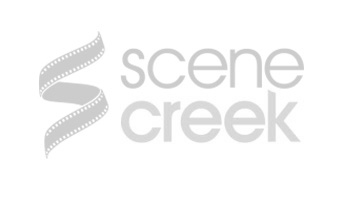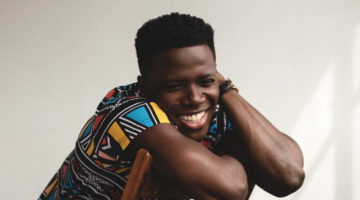4 Questions with Michael Seater and Paula Brancati of People Hold On
We were extremely excited to find out that People Hold On was announced as the October selection for the Canadian Indie Film Series. The film is “an intimate exploration of relationship, friends, enemies, lobe and loss”, though at its core it is a film about transitioning from our twenties and into our thirties and beyond. The film offers great appeal to young people, and is playing across Canada at select Landmark Cinemas on October 7th, before opening at the Magic Lantern Theatres – Carlton Cinema in Toronto on October 9th.
The project is a real labour of love, a collaboration between former rivals Michael Seater and Paula Brancati, who met when she was filming an episode of Life With Derek, in which Seater starred as the titular Derek. They reunited down the road, eventually put aside their differences and went on to create a short film, entitled Sly Cad, which was brought to the attention of Telefilm Canada and played as a part of the prestigious Canada’s Not Short on Talent program at the Cannes Film Festival. This exposure allowed BrancSeater to expand their production team into making a feature, and the result is the eminently identifiable People Hold On. The lush film is directed by Seater, written by Brancati and Seater, produced by both and stars Brancati as Robin, as well as notables like Katie Boland, Chloe Rose and Ashley Leggat.
The film is a wonderful experience throughout and we were lucky to get the chance to speak with Seater and Brancati by phone during a break on the set of their follow-up film, Sadie’s Last Day in Earth, currently filming in Etobicoke. The pair were honest, reflective and forthcoming about the amazing shared experience of People Hold On.
Scene Creek: What is the movie about?
Michael Seater: People Hold On, I mean, I think you can…it’s an interesting film in the way that it came about and the way that we shot it. We basically kind of cast the film as we created the characters of the story. We drew on the fact that we had a ton of old friends, as we all grew up as actors and we wanted to draw on who they were as people and shoot it in a way that gave them a freedom to really make it something natural and authentic so we shot it so they would be overlap, we’d try new things, go off-book, and so it’s a really intimate exploration of your lifelong friendships and questioning whether there really is such a thing, and kind of questioning kind of where you are now, compared to where you thought you’d be, and we kind of focus on people in their late-twenties, but I think that that’s pretty universal, regardless of how old you are and death of childhood and all these great things, and all set against the beautiful backdrop of Northern Ontario and Parry Sound with towering pines and smoky granite, it’s a beautiful thing.
Scene Creek: How do you feel showing off the film?
Paula Brancati: It will be wonderful to share publicly something that has been so private for so long. We finished post at the end of November last year, so this will be wonderful. It does have a killer soundtrack, I think it’s the kind of movie that’s more fun to watch, especially the first time, with people. There’s something that bubbles over, and the audiences we have screened it for, just real crackling energy comes across from these characters that I think it’s totally relatable, and people really seem to hop along on the ride and I think I can sense people picking sides and favourites and couples they want to ‘ship and it’s sort of like I feel people being sucked in to this small world that we’ve built and that’s the only thing I can hope for, that people feel like it’s a real group of friends who are really in this situation because yeah, all of us have bits of our selves in these characters but definitely the events are fictional.
The movie does get dark, and it explores themes of the death of childhood and this fear of not being young and reckless and invincible any more.
Scene Creek: Could you describe your process of directing?
Michael Seater: So much of the work is done in prep, in pre-production and the more you can organize in advance, the more room you have to play on the day. If dot your i’s and cross your t’s and show up with a clear plan, you can show up and go “oh, that’s cool, but let’s change it a bit because I know what we need out of this. People Hold On was interesting. So much of it was in the edit, because the performers were given freedom to explore the scenes. Sometimes things were shot in a specific way, in which it was like “now is not one of the ones where we can do whatever we want”, but very often, I would let the actors explore, and encourage it, and they would lead the page and find their way back. So a lot of scenes there’s like scenes that are two minutes long, that in reality were seven minutes long.
Myself and our editor Haya Waseem, who’s incredible, to cut those scenes down, because you just have to tell a story and a seven minute scene could be interesting, but you can’t have a million of them or your movie doesn’t move forward. Working with her, it was amazing how we were able to clip part of a scene into another scene, or this take into that take. Putting together two takes in a typical film is easy, because your actors stick right to book, and you can just skip from one cutting point to another and it’s easy, but with this, they might be doing ten completely different things: I love what she said in Take 3, but I like how she got from this moment to that moment in Take 1, so it was a lot of piecing the puzzle together. I mean, we could that movie seven different ways and it would be an entirely different film so a lot of choices are made in the editing process are “what are the movie that we want to show people?”
Scene Creek: How true to life is the film?
Paula Brancati: The guy who plays Dan in the film, and I play Robin, is my real-life ex. So Al (Mukadam) and I playing exes, you know, it’s not reinventing the wheel by writing something that’s inspired by a past relationship, but I think it’s rare to actually be able to act that out and work through that on camera with your person, so it was like working as now friends, after being exes was so fascinating, and that’s how everybody felt about their roles. Everybody’s playing a very close version of themselves, or a sketch or we’re all really honest about some of the things we find frustrating about ourselves in these characters and a lot of the cast have been friends for years, they have worked together before, Mike and Ashley of course, on Life on Derek.
It’s like growing up in high school in the Toronto actor scene, there’s a such a…it’s sort of like our high school, we kind of built the character bios based on characters that we are interested in, also thinking of actors we’d like to play them. We had rehearsals based on outlines Mike and I wrote, like a detailed outline, and we recorded conversations with them…to their knowledge (laughs). and then we kind of fleshed that out into a script, and explored it and then on the day there was a lot of improv encouraged and some actors really went for that and some more stuck to the script and there was a really great blend of what was portrayed on camera, really, which is I think an honest depiction of how people talk when they’re in their mid-twenties, a lot of processing feelings aloud, there’s a lot of talking in this movie, and I’m not mad at it because I definitely talk a lot with my friends (laughing) about how we’re feeling.


